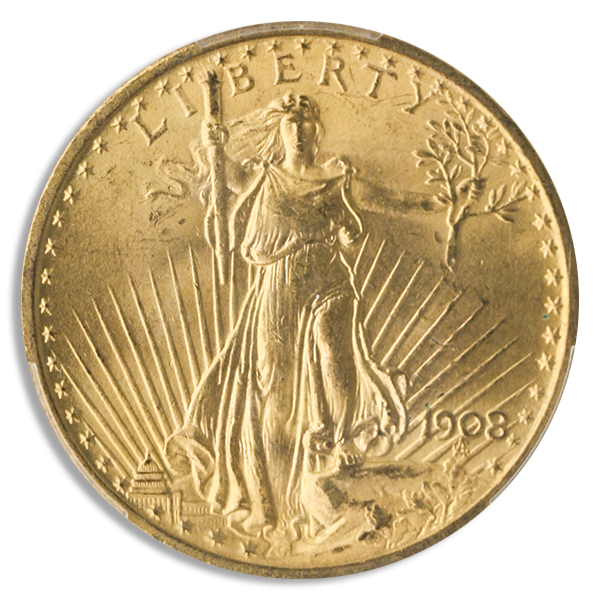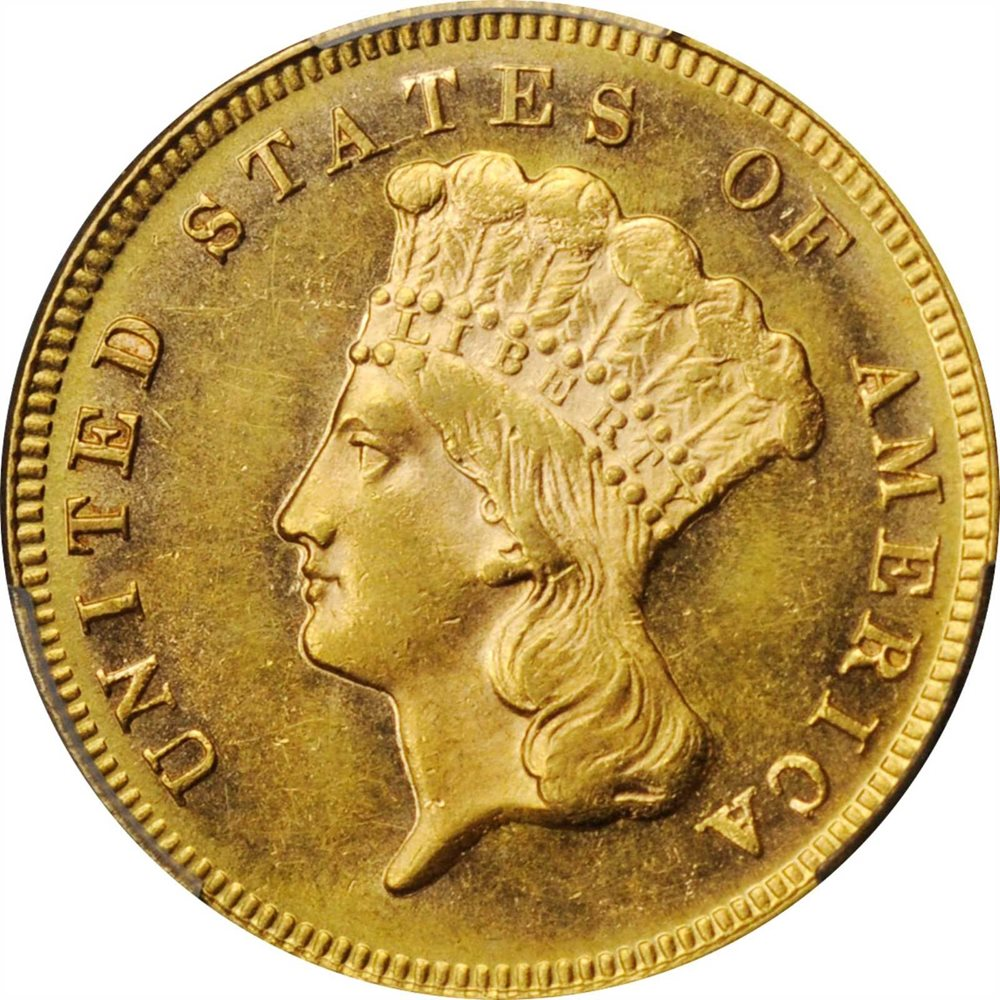1871 Gold $1 Type 3 PCGS MS64 CAC
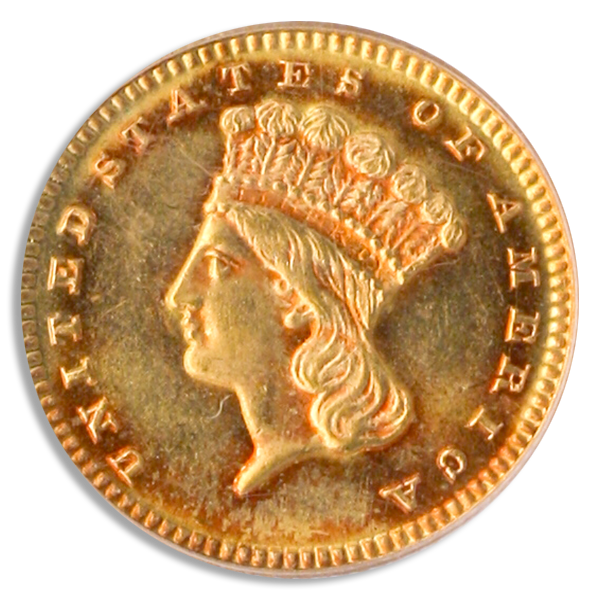


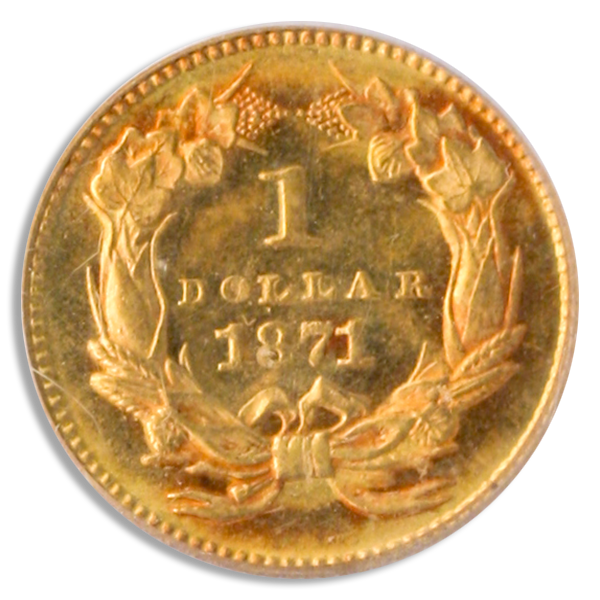

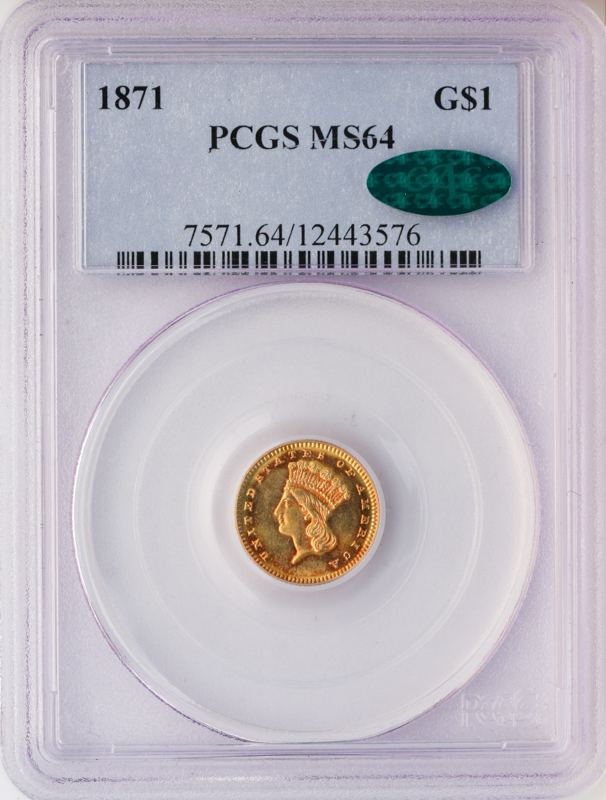

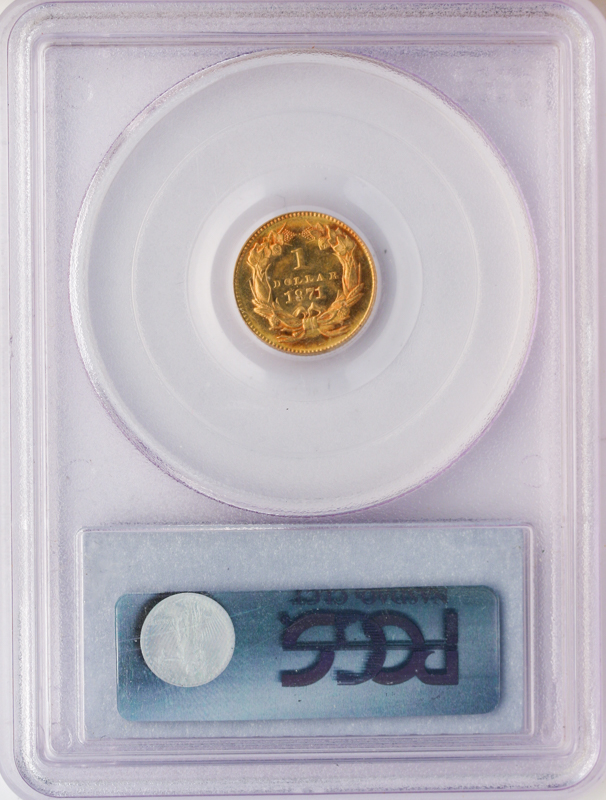

In 1849, the US Mint initiated the production of a novel gold dollar, but encountered a significant issue: its size was excessively diminutive, measuring a mere half-inch or 13 millimeters in diameter. This minute dimension led to frequent loss of the coin, a predicament exacerbated by the fact that losing a dollar in 1849 held substantial significance, as it equated to an entire day’s wages for many individuals.
To address this predicament, in 1854, the US Mint introduced a fresh iteration of the gold dollar named the Small Head Indian Princess Head gold dollar, also referred to as the Type II gold dollar. Paradoxically, the Mint's remedy for the 13-millimeter coin conundrum was a slightly larger 15-millimeter coin, a trivial two-millimeter distinction. Moreover, the coin's engraver, Chief Engraver James B. Longacre, executed a relief on the obverse that was excessively high, resulting in poor striking of a majority of these coins. Consequently, the Small Head Indian Princess gold dollars swiftly deteriorated during circulation.
However, the Mint achieved success on its third attempt in 1856 when it launched the Type III gold dollar, recognized as the Large Head Indian Princess gold dollar. Curiously, the moniker "large head" is not indicative of a physically larger coin compared to the "small head" dollar. Nevertheless, the Mint effectively resolved the production challenges, resulting in well-struck dollars.
Despite the improvements, the Type III dollar did not garner favor among the general populace, ultimately leading to its production mainly as a novelty by the 1880s. Collectors, on the other hand, developed an affinity for it due to its accessibility and the opportunity to assemble a set of three coins, each representing a distinct type. Notably, the coin's unconventional design featured Lady Liberty adorned with a headdress.
To address this predicament, in 1854, the US Mint introduced a fresh iteration of the gold dollar named the Small Head Indian Princess Head gold dollar, also referred to as the Type II gold dollar. Paradoxically, the Mint's remedy for the 13-millimeter coin conundrum was a slightly larger 15-millimeter coin, a trivial two-millimeter distinction. Moreover, the coin's engraver, Chief Engraver James B. Longacre, executed a relief on the obverse that was excessively high, resulting in poor striking of a majority of these coins. Consequently, the Small Head Indian Princess gold dollars swiftly deteriorated during circulation.
However, the Mint achieved success on its third attempt in 1856 when it launched the Type III gold dollar, recognized as the Large Head Indian Princess gold dollar. Curiously, the moniker "large head" is not indicative of a physically larger coin compared to the "small head" dollar. Nevertheless, the Mint effectively resolved the production challenges, resulting in well-struck dollars.
Despite the improvements, the Type III dollar did not garner favor among the general populace, ultimately leading to its production mainly as a novelty by the 1880s. Collectors, on the other hand, developed an affinity for it due to its accessibility and the opportunity to assemble a set of three coins, each representing a distinct type. Notably, the coin's unconventional design featured Lady Liberty adorned with a headdress.
A LITTLE STICKER MAKES A BIG DIFFERENCE.
Within each number of the coin grading scale is a small range of condition from low-end to high-end. Certified coins of the same grade can be of varying quality. Many of today’s collectors want coins that are solid or premium quality for their assigned grade. CAC holds coins to a higher standard so you can be confident in the value of yours. We verify previously graded coins … and award our sticker only to those coins that meet the standard for today’s selective buyer.
WHAT THE CAC STICKER MEANS:
- Verified. Your coin has been verified as meeting the standard for strict quality within its grade.
- Guaranteed. CAC stands behind our verification.
THE CAC STICKER IS BACKED BY EXPERIENCE.
CAC was founded by leading members of the numismatic community, including John Albanese, a respected authority on coin grading and the rare coin market.





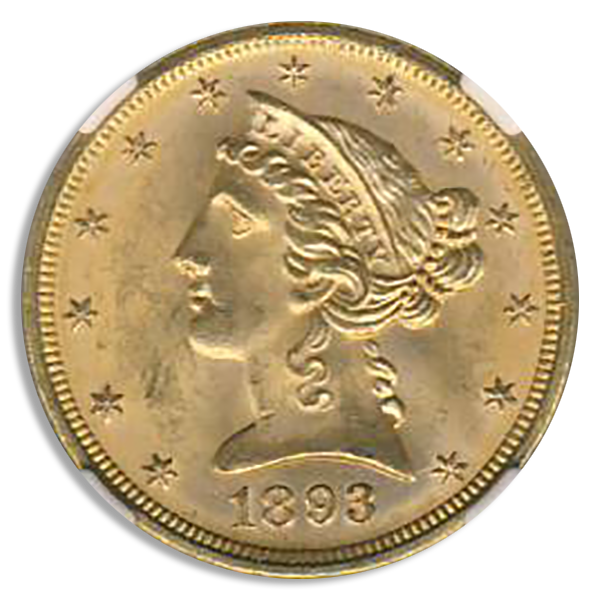
 Quick View
Quick View